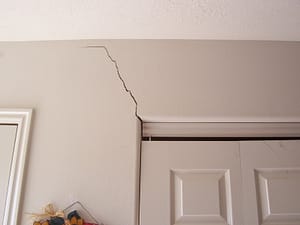Getting My Best Basement Waterproofing To Work
Getting My Best Basement Waterproofing To Work
Blog Article
The Main Principles Of Best Basement Waterproofing
Table of ContentsA Biased View of Best Basement WaterproofingBest Basement Waterproofing Fundamentals ExplainedSome Known Incorrect Statements About Best Basement Waterproofing The 5-Second Trick For Best Basement WaterproofingAbout Best Basement Waterproofing
uses excavation methods towards the base of the structure's foundation. includes getting rid of moisture after it has entered the basement. AdvantaClean's qualified specialists and technicians will certainly locate the water resource. If wall or slab fractures exist, we will certainly inject polyurethane and epoxies into the cracks and seal the compromise, stopping additional dampness from going into.If there's condensation on the outside of the foil, you have high moisture in your basement. If the aluminum foil has condensation on the within surface area (following to the wall surface), the soil around your home may be naturally damp from a high water table or poor soil drain.
You can waterproof simply your interior walls, which might solve the problem. Once they dry, they stick permanently to concrete and stonework walls.
The 45-Second Trick For Best Basement Waterproofing
Swirl the brush at the final phase of application to provide the wall surface an attractive, ended up appearance. Concrete water resistant finishings can't be put on previously painted surfaces; check the label. A 5-gallon pail expenses regarding $60. Likewise called densifiers, they appropriate just for wall surfaces that haven't been painted or sealed.
However you comb, roll, or spray it on a lot more heavily one gallon covers simply 75 square feet, not the 300 square feet regular with conventional paint. Water-proof paint is fine for do it yourself application. You can apply it over painted surface areas, and paint over it once it's healed (one gallon expenses $37).
It can set you back $10,000 to $15,000, depending on the job needed. Exterior waterproofing entails digging deep into all around the residence to the full deepness of the foundation walls, after that mounting a waterproof covering or membrane topped by water drainage panels.
A cellar without waterproofing is kind of like that. Your cellar doesn't desire to go via a rainstorm without proper security simply as much as you don't want to.
Getting The Best Basement Waterproofing To Work
Yet if you've done your study, you 'd recognize there are two browse this site types of waterproofing: inside and exterior. It can obtain confusing what they both mean, which one's a better investment, and what will really maintain the water out. Don't stress, we created this blog site to conveniently define both methods for you and discuss the pros and cons of each.
Exterior waterproofing is a waterproofing method that involves securing your home from the outside. It's sort of like a moat around a castle. It entails digging a trench around your entire home down to the foundation (about 8 to 10 feet down). The foundation walls are then cleansed, secured, and covered with a waterproof membrane layer or sealant.

How Best Basement Waterproofing can Save You Time, Stress, and Money.
It's a more involved procedure that calls for excavating up your yard, which is expensive and taxing. Outside waterproofing involves eliminating every little thing bordering the house, including porches, driveways, sidewalks, landscaping, air conditioning devices, decks, and so forth. If any one of the work was done improperly and water is still entering your basement, there isn't much you can do to deal with or fix it.
Interior basement waterproofing includes waterproofing from the inside. Any type of water that leaks right into your basement is rerouted before it touches your flooring. It's sort of like using a raincoat under your garments. It involves 2 points: a water drain track and a sump pump. It works by sealing the within your cellar wall surfaces and floorings so water that tries to go into is funnelled out via a sump pump.
It's an efficient technique to water resistant your cellar - Best Basement Waterproofing. The downside of interior cellar waterproofing primarily pertains to the setup procedure. This method needs saved items, furniture, and integrated shelving or closets to be relocated from touching the basement walls. And during setup, your cellar can not be utilized. The check here most significant distinction in between the two techniques is this: Exterior waterproofing is a preventative remedy and indoor waterproofing is a corrective solution.
The 9-Minute Rule for Best Basement Waterproofing
In final thought, outside and indoor basement waterproofing are both effective techniques of shielding your home from water damage. Outside waterproofing develops a barrier that avoids water from entering your home, while indoor waterproofing reroutes water that does enter your home. And it is necessary to keep in mind that outside waterproofing is a costly and turbulent installment procedure when contrasted to indoor waterproofing.
Whichever technique you select, ensure you choose a reputable browse around these guys and trustworthy specialist for the work. Both techniques need knowledgeable workers to manage the task. If you have any questions about cellar waterproofing, please get to out to us. And if you're in our service location and have water in your basement, call us for a free, no-obligation home assessment.
You can submit our type right here, begin a conversation in the bottom right-hand corner, or call us at 1-800-827-0702.
Report this page